Title: 2025 Neta X 400 Air Review: A Detailed Analysis of the Budget-Friendly Electric Compact SUV Performance and Features
- 144
- 15 April 2025
After covering 14,000 kilometers in four months, can the AITO M7 truly satisfy compared to the Ideal L6?
After driving 10,000 kilometers, I am still very satisfied with the M7 personally. It has many advantages, such as ample space that meets various usage scenarios for long-distance road trips, and its intelligent features live up to expectations. However, if I had to pick what I m most satisfied with, after some thought, I believe it s Seres and Huawei s rapid response to user feedback and their ability to quickly iterate the vehicle s systems. Building such capabilities not only requires a strong commitment to prioritizing user value but also relies on a robust technological foundation—both of which are areas where Huawei excels. For example, I once mentioned in a post that the new M7 s speed maintenance on high-curvature highways wasn t linear enough, and in the subsequent OTA update (version 3.3.8.12), this issue was improved. Therefore, Seres, empowered by Huawei, with its rapid response to user feedback and quick iteration of vehicle systems, is what I m most satisfied with.
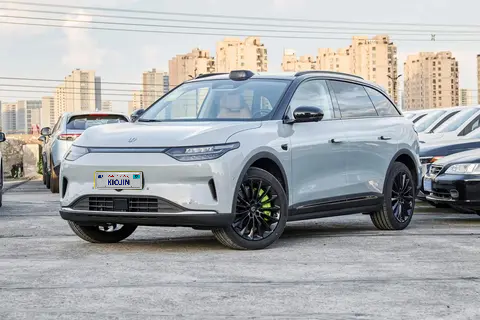
No one is perfect, and no car is flawless. The M7 also has many issues and aspects that leave me unsatisfied. What disappoints me the most is the highly unreasonable optional configurations of the M7, which still bothers me to this day. It’s clear that those oversized 21-inch wheels are useless except for their appearance, yet they force you to choose them—otherwise, you can’t opt for features like electric running boards or the rear entertainment tablet. They could have easily allowed users to pick any two out of the three options. Another major letdown is the lack of a zero-gravity seat for the front passenger. At the very least, they could have offered it as an optional add-on. Some new energy vehicles priced at just over 100,000 yuan already come with two zero-gravity seats (though they aren’t truly zero-gravity), showing that they at least considered users’ needs in this regard. Overall, I’m extremely dissatisfied with these configuration choices.
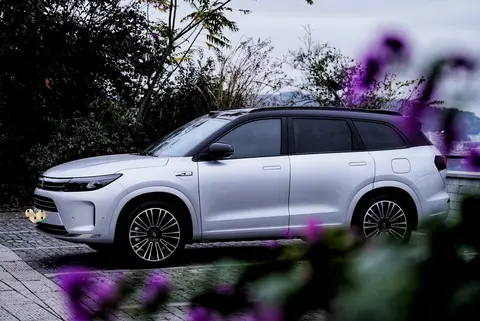
After all the praise and criticism, now let s talk about the M7 in detail. Starting with the interior space, the design of the M7 is quite interesting. From the outside, it doesn t appear particularly large, but once you step inside, you ll be surprised by how spacious it feels—like, Wow, it s huge!
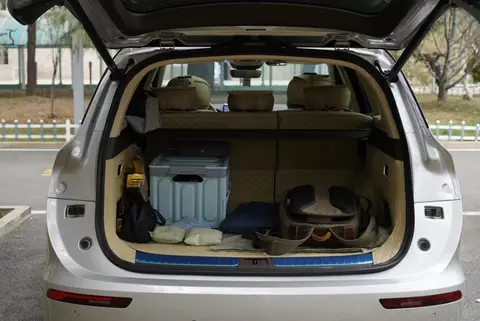
Highlights of the Space Design: The M7 offers all the conventional in-car storage spaces, which are not only comprehensive but also very convenient. A particularly noteworthy feature is the area beneath the saddle—specifically, the section below the gear lever. This design not only creates a visually open and clean aesthetic but is also highly practical, perfect for storing bags or slippers. Another clever storage spot is behind the central control screen, where an additional storage box can be added to hold items like tissues, cigarettes, ETC cards, and more, making it easy to access miscellaneous items. Best of all, this storage area is concealed behind the large screen, keeping the interior clutter-free. As someone who is 1.7 meters tall and weighs 180 pounds (falling into the big guy category), I found the seating spacious. After adjusting the front seat to my preference, I could comfortably cross my legs in the rear—though my thick thighs made holding the position a bit tiring. The rear seating area is not only roomy but also exceptionally comfortable, thanks to the electrically adjustable backrest angle of the rear seats.
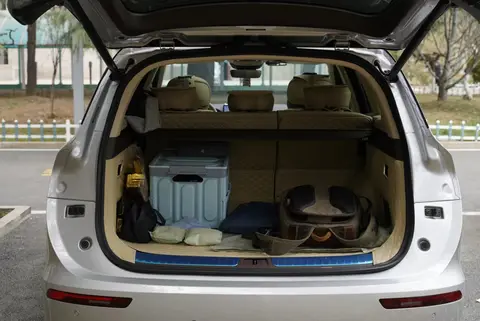
Trunk capacity: The five-seater M7 has an exceptionally large trunk space due to the removal of the third-row seats. The area originally occupied by the third row has been designed into a hidden compartment. Honestly, I haven’t used this compartment much since there’s nothing I need to hide, but some of my friends store items like alcohol, cigarettes, or clothes in there. I’d estimate it’s roughly equivalent to an extra 21-inch suitcase. Aside from the hidden compartment, the trunk can easily accommodate four to five 21-inch suitcases—my car’s storage bins fit in effortlessly. Even without folding down the rear seats, all my camping gear fits perfectly.
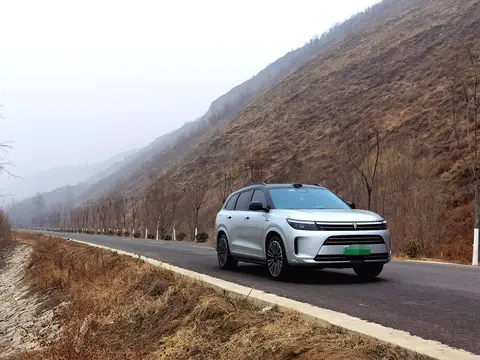
Space Experience: I’m a somewhat introverted big guy, and in many cars, I often feel cramped, usually needing to take off my jacket to feel comfortable. But sitting in the M7’s driver seat actually gives me a sense of spaciousness. When I used to review cars, I’d describe the distance to the roof or front seats in terms of fist-widths—now, can I measure it in forearm lengths? Just kidding, but after adjusting my seat, the distance from my head to the sunroof really is about the length of a forearm.
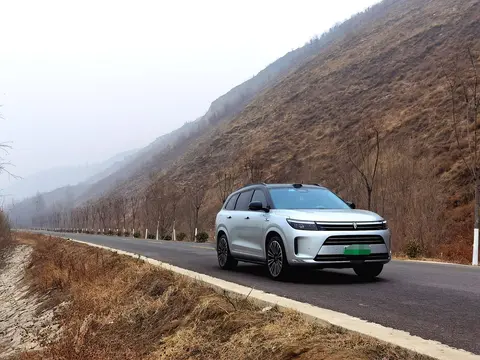
The reason I ultimately defected from being a loyal supporter of gasoline-powered cars to embracing range-extended new energy vehicles was because, after test-driving a new energy car, I was completely won over by its driving experience, which far surpassed that of traditional gasoline cars. In my opinion, the driving experience of the AITO M7 stands out among all the new energy vehicles I ve test-driven. Now, let me elaborate in detail:
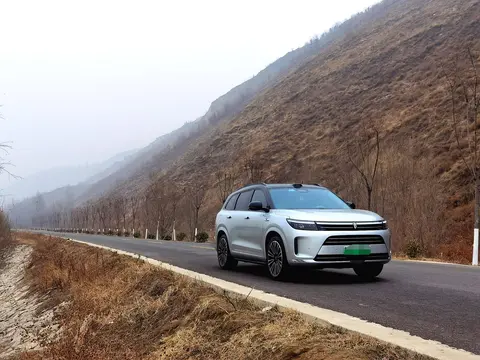
Starting off is a given, but even in Comfort mode, thanks to the dual-motor setup, pressing the accelerator about 30% gives a launch-like sensation. If you switch to Sport mode and push the pedal to 50%, you’d better consider whether your heart can handle it—or if you might feel dizzy. As for climbing hills, the M7 doesn’t need to worry about having enough power; the only concern is battery consumption. As long as you’re willing to floor the pedal without caring about energy efficiency, there’s no paved slope it can’t conquer, and you won’t even feel a sudden drop in speed.
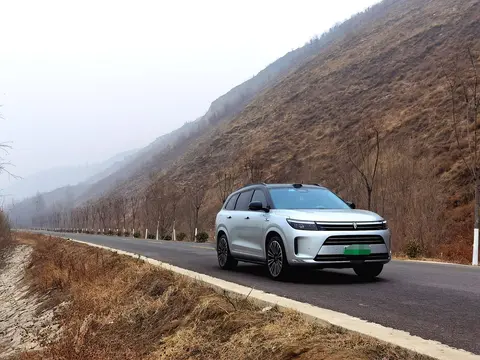
The M7 also features a speed-sensitive electronic power steering system. At low speeds, the steering wheel is very light, making it effortless for even a woman to turn or make U-turns with one hand. On the highway, the steering wheel becomes heavier and more stable, providing a reassuring sense of control. Personally, I feel the weight is just right, though in medium-to-low-speed corners, the steering can feel slightly heavy, and lane changes in curves may seem a bit sluggish—a sensation I’m not particularly fond of.
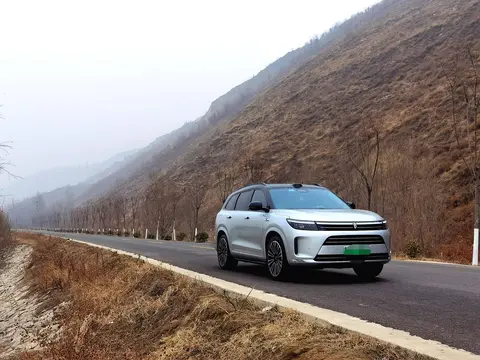
I must give praise to the M7 s braking system. Thanks to its dual-floating calipers, the M7 delivers highly efficient braking with excellent linearity. The braking feel is light and responsive without being overly sensitive or nervous, offering both comfort and reassurance. The brake pedal height is quite appropriate, provided that the seat position is properly adjusted to match the driver s leg length—otherwise, it might feel slightly high.
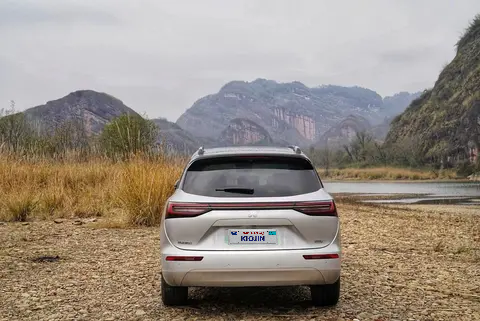
The Huawei ADS 2.0 in the M7 is no joke. Taking a curve at 90 km/h, I barely felt any body roll. At 70 km/h, I sharply steered to dodge a flying tire fragment (though I didn’t completely avoid it—it took a small chunk out of my wheel rim), yet I didn’t sense any near-loss of control. Of course, I usually drive in Comfort mode. I haven’t experienced Sport mode yet, but I imagine the driving feel would be even more impressive, though the ride comfort would likely drop a few notches.
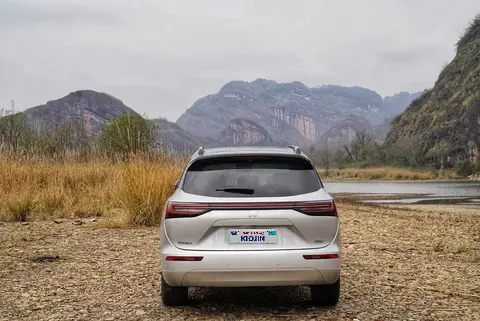
Apart from road trips, I usually drive in Shandong. Winters there occasionally drop below minus twenty degrees Celsius, while summers remain quite hot. Except for March, April, and October, I basically need to turn on the air conditioning as soon as I get in the car. For example, in winter, my car s pure electric range (from 95% to 20%) is typically around 120 kilometers, while the full tank and full charge range on highways (driving at the speed limit) is roughly 800 kilometers (based on my own estimates—I’ve never run it down to zero fuel or battery). Now that it’s spring and temperatures have reached around 20 degrees, the pure electric range has increased to 200 kilometers, and the full tank and full charge range should be around 1,000 kilometers.
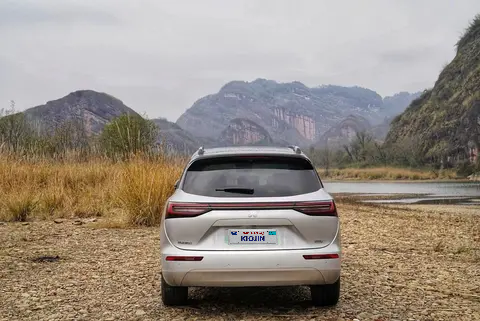
This was taken while driving on the Lianhuo Expressway in mid-March, with the temperature at 14°C and the battery at 66%.
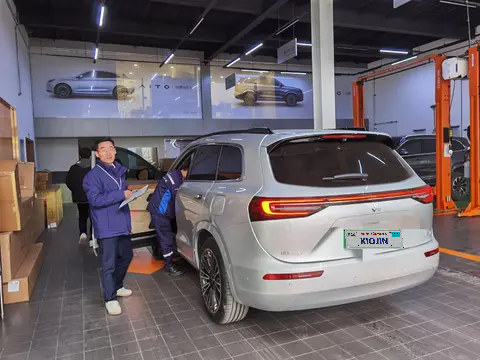
This is the energy consumption from that self-driving trip to Fujian in December.
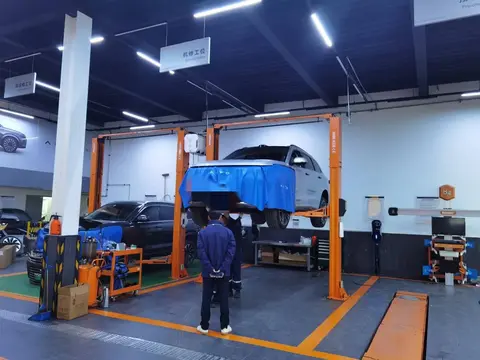
Due to different operators and varying power levels of charging stations, the time required to fast charge from 20% to 95% also differs, typically ranging from forty minutes to one hour.
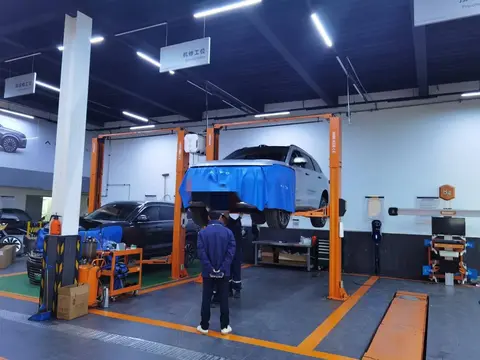
The exterior lines of the M7 are overly rounded, lacking sharpness and muscularity. Its chubby and plain appearance, while enduringly pleasant, feels too simplistic and devoid of design flair. To compensate for the imperfections in its lines, one could only resort to vehicle decals or color-block patches, but that would disrupt the M7 s dignified and composed aura, making it appear too flashy. Therefore, I ultimately opted for a two-tone color scheme. As for the build quality of the M7, no obvious flaws have been detected so far, though some gaps are slightly larger. We ll see if the molds are replaced in the future.
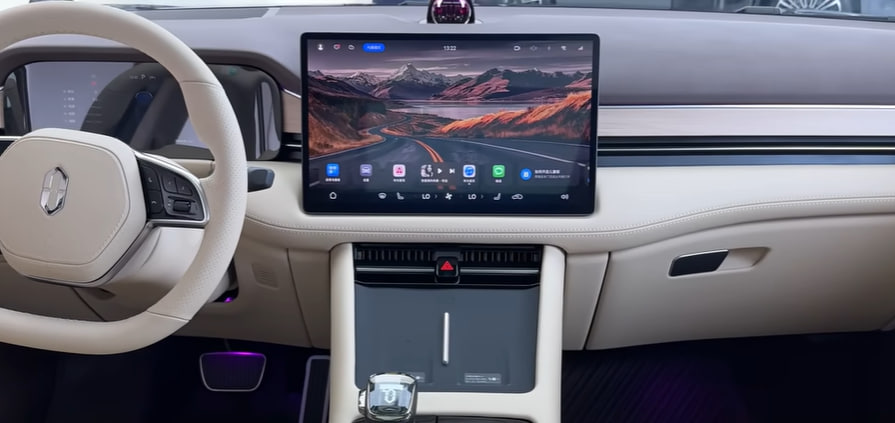
At the time of choosing the car, it was my wife who made the final decision, and the main factor that convinced her was the interior of the M7, which truly won her over. What appealed to my wife, who prioritizes aesthetics above all, were two key aspects. First, the interior color perfectly matched her preferences—especially the almond shade I selected, which was neither glaringly white nor so dark as to show dirt easily, giving off an elegant and relaxed vibe. Second, the design of the interior struck a balance—it was stylish, minimalist, and understatedly modern, avoiding both outdated designs from over a decade ago and overly flashy elements. In short, it completely aligned with our taste.
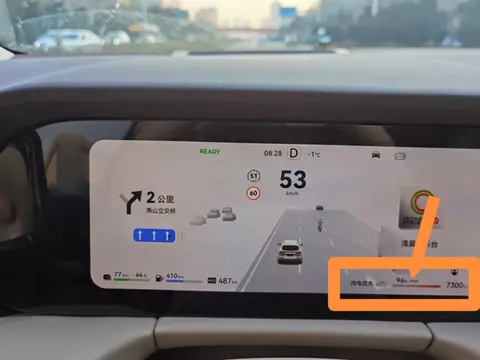
The materials used are quite fitting for a car in this price range. The Nappa leather and soft-touch surfaces have a premium feel, especially the unique materials on the dashboard. The crystal gear shifter looks very upscale. The thickness of the steering wheel is just right—this genuine leather steering wheel can be cleaned and maintained along with other leather parts; there s really no need to cover it up with additional accessories.

The M7 s seats achieve a perfect balance in terms of comfort, support, and envelopment. With the added benefits of massage and ventilation functions, sitting in them is truly a pleasure. If I were to offer any suggestions, I would recommend enhancing the seat design to improve the envelopment further and adjusting the lumbar support slightly lower, as many people prefer it positioned at the lumbosacral area.
The value for money is decent. However, there were no discounts when purchasing the car, and missing out on trade-in benefits and local subsidies was quite frustrating. It also felt disappointing that only the first maintenance service was complimentary. On the bright side, the attitude of the after-sales and delivery specialists was good, and the overall service level was above average, which provided some consolation. The maintenance items for the new energy vehicle are similar to those for a gasoline car, but since the range extender s usage mileage is lower compared to a traditional engine, maintenance frequency is reduced. The three-electric system doesn t require maintenance, so the upkeep costs are about the same as for a gasoline car.
What more needs to be said about the intelligence of the M7? Being far ahead is beyond debate. With four OTA updates in four months, it now supports intelligent driving navigation on elevated roads and highways. Urban NCA has also been rolled out, and though it may not be as reassuring as highway NCA, it’s already making progress. Features like automatic parking, valet parking, and remote parking are all available, with positive and normal feedback from car owner communities. As for voice interaction and the richness of in-car apps—with HarmonyOS 4.0 now onboard, is there even anything left to discuss? Far ahead—that says it all.
Although it s said to be far ahead, that s relative to other cars. Compared to my expectations, there are still some shortcomings. For example, issues like slowing down when encountering large vehicles, the tendency to keep to the right side of the lane, the need to take over when road markings are unclear or during road construction, unnecessary lane changes, etc., have not been fully resolved even after several OTA updates. Of course, these are all related to the logic of the autonomous driving system, and the manufacturer s considerations may not fully align with my requirements. However, some issues are purely software bugs, such as the problem shown in the image below:
This is the Huayin section of the Lianhuo Expressway. There were no cars in front or behind on the right side, yet changing lanes with the turn signal was impossible. The issue disappeared the next day after cleaning the radar and laser sensor heads.
And there s also the issue shown in the image below:
There were few cars on the road, so I wanted to speed up as quickly as possible, but the PWR actually reached 100%, preventing any further increase in speed. Although it was a bit cold, it was only minus one degree Celsius.
This phenomenon occurred twice and then never appeared again, with the reason remaining a complete mystery.
The noise control can only be described as average. On highways or when the range extender is running, the tire noise is still quite noticeable—at least beyond my expectations. The noise mainly comes from the rear. If the manufacturer aims to further improve NVH performance, they could consider enhancing the rear sealing and the rear wheel area.
The reason for calling it expected in the title is that the new M7 is indeed an excellent car, with overall quality meeting expectations. After 14,000 kilometers, the hardware has basically shown no minor issues, and with the continuous upgrades of Huawei s ADS 2.0, the claim that it gets better and better to drive is no exaggeration. Even though there are still flaws in areas like intelligent driving, these can be improved and perfected through OTA updates. What was unexpected, however, is the overall service from Seres. Despite the support of Huawei s service system, Seres customer service remains inefficient and chaotic, and efforts to enhance loyalty among existing users can only be described as subpar. This is not just inferior compared to other emerging EV brands but even falls short when measured against traditional automakers. Other service aspects aside, it’s fair to say that Seres service currently remains at a superficial level.


